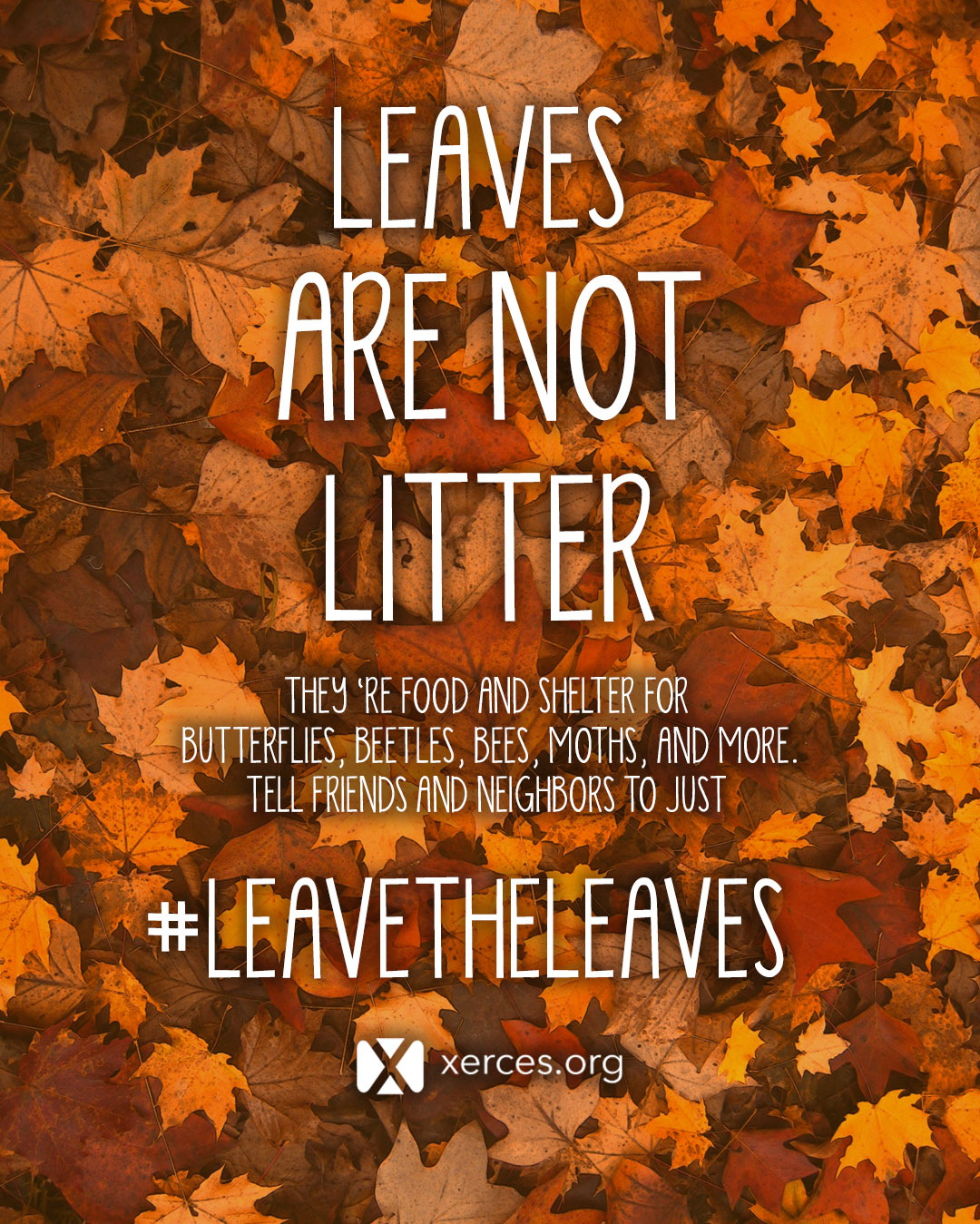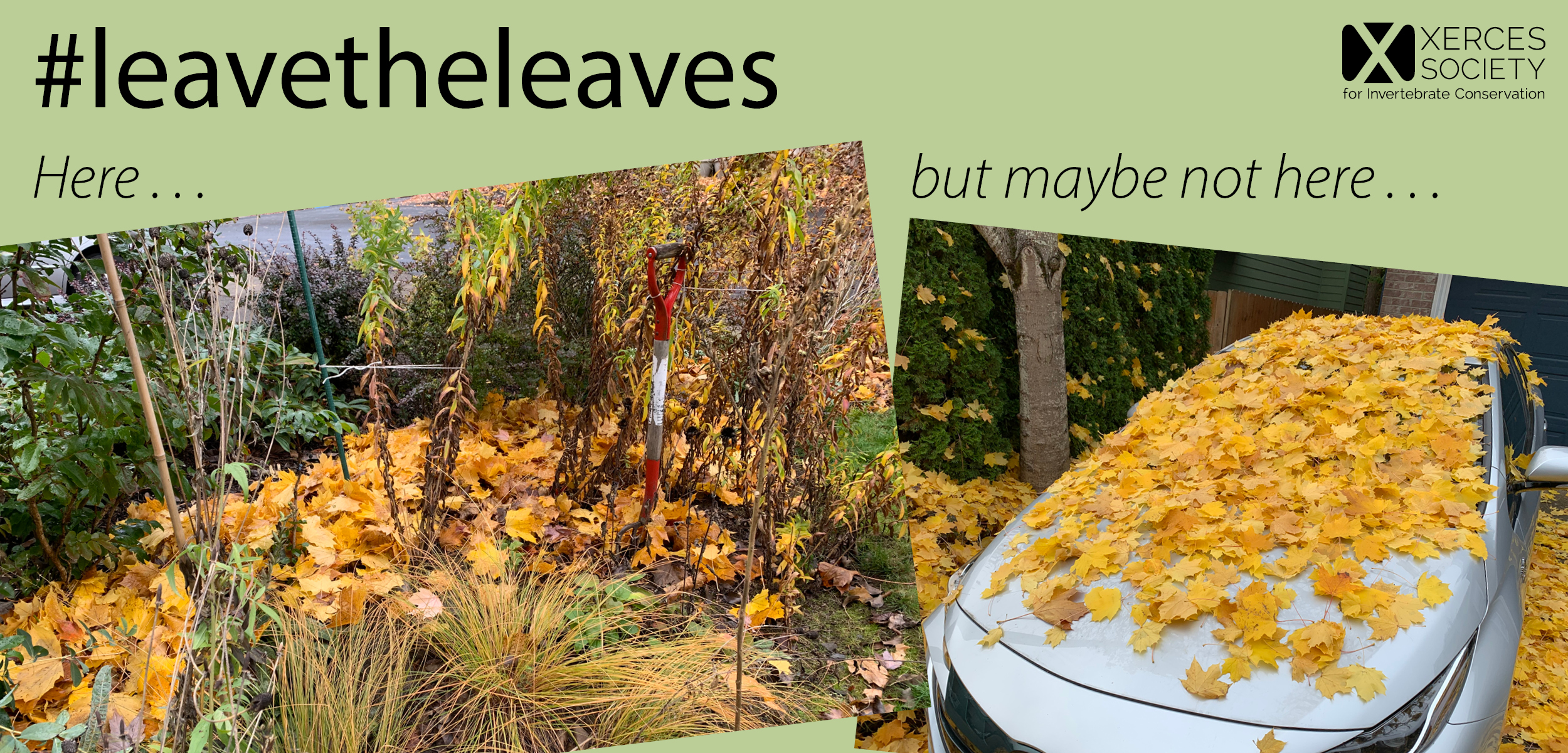Leave the Leaves to Benefit Wildlife | Xerces Society
It is fall again and we have harvested all of our garden produce and are making sure our outside faucets are protected against winter’s freeze. The leaves are changing color and tumbling from the trees—and that means fall cleanup in the yard and garden.
For many people fall cleanup means cutting all the seed heads and stems off the flowers and raking up all of the leaves. A tidy garden and yard are what many people strive to achieve. Everything clipped back, leaves raked and removed, messy piles of branches put in the green bin for pick up. This tidiness may look nice to us, but it is not good for all of the small creatures that live in and around your property.

Out of sight often means out of mind for people and fall is a time when you do not see the bees, butterflies, and other beneficial insects that were flitting around your flowers all summer. Where do these insects go when they are not visiting your garden? Some do migrate—like the monarch butterfly, flying south to overwinter in trees in Mexico or along the California coast—but the vast majority spend their entire life in and around your property. Many of our native solitary bees have laid eggs and provisioned nests in soil or in standing dead trees or hollowed out branches where the young are pupating. Bumble bee queens have found areas to overwinter under branches, in rock walls and in other relatively dry, snug places.
Many species rely on fallen leaves for cover and to insulate them from the elements. Depending on the species, butterflies and moths spend the winter as eggs, caterpillars, pupae, or adults. As Justin Wheeler described in our first leave the leaves blog:
Great spangled fritillary and wooly bear caterpillars tuck themselves into a pile of leaves for protection from cold weather and predators. Red-banded hairstreaks lay their eggs on fallen oak leaves, which become the first food of the caterpillars when they emerge. Luna moths and swallowtail butterflies disguise their cocoons and chrysalises as dried leaves, blending in with the “real” leaves. There are many such examples.
Beyond butterflies, bumble bees also rely on leaf litter for protection. At the end of summer, mated queen bumble bees burrow only an inch or two into the earth to hibernate for winter. An extra thick layer of leaves is welcome protection from the elements. There are so many animals that live in leaves: spiders, snails, worms, beetles, millipedes, mites, and more—that support the chipmunks, turtles, birds, and amphibians that rely on these insects for food.

Leave the leaves does not mean ignoring them and leaving them where they fell. You can move them to places in your yard where they are out of the way, will not kill your turf, and will still help wildlife. A thin layer of leaves can actually help turf—but too much will kill the grass. Consider raking leaves into areas around trees, or use them as winter mulch for perennials or to cover garden beds. I have found in Oregon that a thick layer of leaves in my garden beds helps minimize weed problems early in the spring and can be a great soil amendment.
We also let our neighbors know what we are doing so that they know we are not just being lazy. The same neighbors see a variety of flowers throughout the season and an abundance of pollinators and birds visiting our yard. The messiness is just an extension of our wildlife gardening and by making sure people know that wildlife need places to live year round—especially when it is cold and grey outside—it does help them understand why we should all #leavetheleaves!
So next time you have fall cleanup chores in your yard think about how you can have a yard for you, your family, and for all of the animals with which we share this planet.


